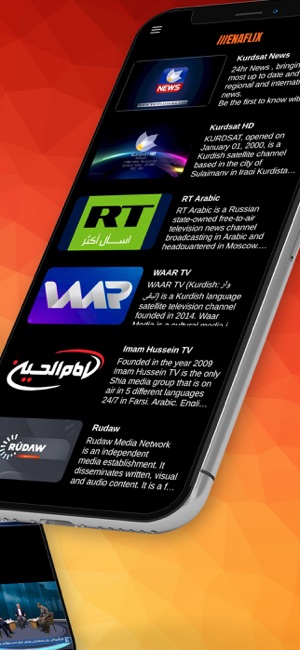The Changing Video Market for Satellites
Then bonded cellular came into existence and a lot of that business, particularly for breaking news, and low budget events, transitioned away from satellite and onto cellular. Now, in addition, some of those links are being carried by Starlink and OneWeb, sometimes this is the only link, but they can also be part of a hybrid service with bonded cellular. When this occurs, the link will seamlessly switch between the two depending on which offer the best path at the time.
The Starllink service can be ordered directly from the website, so no pre-booking required. Users are able to choose between the standard service, which has a limit, albeit a high one of one terabyte a month, and a business class service, which has no limit. Users can also choose between the standard and a high-performance terminal.
LiveU is one company offering Starlink as part of the mix in its services. Some of its first transmissions came from Ukraine, where the terminals were used for war reporting. A New York based broadcaster also used Starlink terminals in conjunction with cellular to report on the return to school after the May 2022 Uvalde shooting. And, some of LiveU’s customers also used this combination to report on the funeral of Queen Elizabeth II.
Using Starlink, or any LEO system comes with issues not found with GEO satellites. Firstly, since the satellites are constantly moving, relative to the user, it’s not sufficient to have a view of a one point in the sky, anything that blocks a view of the sky can pose a problem. Secondly, using a single Starlink terminal bandwidth may provide peaks and troughs, as the satellites pass overhead. Something, that is hardly ideal for a video transmission. Some users get round this by using two bonded Starlink terminals, as it appears that even if they are closely collocated, the peaks and troughs are not necessarily in sync, so this smooths out the bandwidth. Similarly, bonding with cellular, also works to smooth out the signal. According to LiveU, even though by definition as a LEO constellation, Starlink latency is low, setting a latency of 1.6 seconds or greater is needed to overcome jitter.
Starlink, offers several advantages, over both traditional geostationary satellite links and bonded cellular. Firstly, it can be available in places where there is no cell service, secondly, depending on the location, it may provide higher bandwidth, and thirdly, it is relatively cheap, particularly when compared to GEO links, and it doesn’t have to be pre-booked. All these combine to make it a good option for breaking news, particularly if the budget is tight.
However, Starlink is not the only LEO being used for contribution. OneWeb was recently used to transmit a UEFA Champions League match between the Faroese team KI Klakssvik and Ferenevaros of Hungary. The Faroe islands are somewhat isolated, having only two fiber links to the rest of the world, both of which have been cut in the past. There are no traditional satellite trucks based on the island, and the only way to get them there is by ship, something which requires advance planning, and with football leagues there isn’t always enough notice of upcoming games, which presents a logistical challenge. Using a Kymeta flat panel antenna the signal was encoded into a standard MPEG stream and transmitted to Globecast in the UK for traditional satellite uplink to the international broadcasters carrying the match. Zixi transport technology was used, and was able to cope with the frequent handovers and delivered an error-free stream.
Changing Viewer Preferences
So that is a change on the contribution side of the industy, and as I mentioned in my article about the NAB earlier this year (https://satellitemarkets.com/events/nab-100th-anniversary-edition-highlight-broadcast-market-satellite), the way content is being viewed, is also changing. When streaming first made its way into the viewing landscape, the perceived wisdom at the time was that its success was due to three things. Firstly, cost, viewers were resentful of paying large monthly fees to cable and satellite companies for bundles of channels, half of which they neither wanted nor watched; and secondly, advertisements; viewers were sick of having their favorite programs interrupted by advertisements, most of which they had seen multiple times anyway. And thirdly, video-on-demand (VoD) was a very attractive proposition. Watch what you want, when you want, with the freedom to binge view.
 The first still holds, significant numbers of viewers are maybe even more price sensitive than they were ten years ago. Inflation may be coming down, but many have seen a noticeable decrease in their disposable income in the last couple of years. The second and third arguments are starting to look weaker, as advertising supported video-on-demand (AVoD) and free advertising supported linear TV (FAST), are increasing in popularity, as I mentioned in the previous article (April 2023). More data has emerged since then, highlighting just how significant this trend is. Deloitte Global is predicting that by the end of 2023, almost two-thirds of viewers in developed countries will use at least one AVOD service, and that all major subscription video-on-demand (SVOD) services will have launched an ad-funded tier, in order to keep subscribers. It goes on to predict that by the end of 2024 half of the providers will also have launched a free ad-supported streaming TV (FAST) service. Research conducted last year, showed that in Germany whilst 38% of viewers would prefer to pay 12 euros for an ad-free SVOD, 41% would prefer a free service with 12 minutes of advertising per hour. In the UK the difference was even more marked, with 44% preferring the free service with 12 minutes of advertising, versus 39% who would prefer to pay £10 for an ad-free service. Deloitte is also predicting that by 2030, most online video service subscriptions will be partially or wholly ad-funded.
The first still holds, significant numbers of viewers are maybe even more price sensitive than they were ten years ago. Inflation may be coming down, but many have seen a noticeable decrease in their disposable income in the last couple of years. The second and third arguments are starting to look weaker, as advertising supported video-on-demand (AVoD) and free advertising supported linear TV (FAST), are increasing in popularity, as I mentioned in the previous article (April 2023). More data has emerged since then, highlighting just how significant this trend is. Deloitte Global is predicting that by the end of 2023, almost two-thirds of viewers in developed countries will use at least one AVOD service, and that all major subscription video-on-demand (SVOD) services will have launched an ad-funded tier, in order to keep subscribers. It goes on to predict that by the end of 2024 half of the providers will also have launched a free ad-supported streaming TV (FAST) service. Research conducted last year, showed that in Germany whilst 38% of viewers would prefer to pay 12 euros for an ad-free SVOD, 41% would prefer a free service with 12 minutes of advertising per hour. In the UK the difference was even more marked, with 44% preferring the free service with 12 minutes of advertising, versus 39% who would prefer to pay £10 for an ad-free service. Deloitte is also predicting that by 2030, most online video service subscriptions will be partially or wholly ad-funded.
The increase in AVOD is also corroborated by Samsung. Samsung has a 61% market share for smart TVs in Europe, and its latest report,
 |
| MENAFLIX is a new streaming service from STN, that enables viewers to watch live and on-demand channels from the entire Middle East region, including news, entertainment, religious, children’s programming and radio, via the free app available for Apple and Android devices. MENAFLIX is also available through Roku and Amazon. |
“Behind the Scenes: Decoding the Streaming Landscape” examined data from five European countries (UK, Italy, Spain, France and Germany). In the first half of last year, time spent viewing AVOD increased by 5% and time spent viewing SVOD decreased 5%.
Interestingly, in the UK, the latest Media Nations Report from Ofcom, showed that older viewers, (over 64), are starting to turn away from broadcast TV. The research showed that they watched 8% less than broadcast TV in 2022 than in 2021, and 6% less than in 2019 (the last pre-pandemic year). At the same time, their take-up of streaming services, Disney+ in particular increased to 12% in 2022, versus 7% in 2021. One would assume that for this channel in particular, the uptake is being driven by the presence of grandchildren.
Innovations
Traditional broadcasters, recognized the move to streaming several years ago, and developed their own streaming offerings to compete with
the likes of Netfilx, Amazon Prime and Hulu and now many, including Disney+ have developed an advertising supported tier. A new player in the in the streaming market place is STN, based in Slovenia in Central Europe, and one of the top 20 global teleports ranked by the World Teleport Association (WTA). STN is one of the founding partners of MENAFLIX, a streaming service targeted to Arabic speaking viewers the world over. MENAFLIX can be accessed free of charge through an app available for Apple and Android devices, and also through Roku and Amazon.
STN CEO Mitja Lovsin said: “As a founder of MENAFLIX and long-time operator in the MENA region, STN is known for its cutting-edge technology. As OTT viewing grew in popularity, we expanded our portfolio of services, so that we could work with customers who wanted to convert their traditional video streams to streaming and on-demand services. From the very beginning we were careful to select partners for MENAFLIX, that fully understand the MENA marketplace and share our vision of providing the very best in customer service and attention to detail. We are delighted to now be able to offer our customers the opportunity to join MENAFLIX, the rapidly growing, Arabic language OTT service.”
The service provides live and on-demand channels from the entire Middle East region, including news, entertainment, religious, children’s programming and radio. By utilizing programmatic advertising for the live free-to-air channels, MENAFLIX TV allows channels to expose their content worldwide and generate a new revenue stream from personalized advertisements.
As always, satellite players continue to innovate to keep and increase business as their markets evolve, it will be interesting to see what the video market looks like in a year’s time.
------------------------------------
 Elisabeth Tweedie has over 20 years experience at the cutting edge of new communications entertainment technologies. She is the founder and President of Definitive Direction (www.definitivedirection.com), a consultancy that focuses on researching and evaluating the long-term potential for new ventures, initiating their development, and identifying and developing appropriate alliances. During her 10 years at Hughes Electronics, she worked on every acquisition and new business that the company considered during her time there. She can be reached at etweedie@definitivedirection.com
Elisabeth Tweedie has over 20 years experience at the cutting edge of new communications entertainment technologies. She is the founder and President of Definitive Direction (www.definitivedirection.com), a consultancy that focuses on researching and evaluating the long-term potential for new ventures, initiating their development, and identifying and developing appropriate alliances. During her 10 years at Hughes Electronics, she worked on every acquisition and new business that the company considered during her time there. She can be reached at etweedie@definitivedirection.com





